Wild Concept Cars at the 2010 LA Auto Show
Mercedes-Benz Biome
This is the Mercedes-Benz you'll aspire to own in, say, 2310. The bright white concept looks like it belongs on the set of Star Trek. Yet the Biome was actually designed at the German company's design studio in Carlsbad, California. There's room for four-passengers inside, or so we're told, and the seating position is in a diamond format.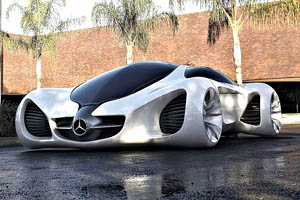 Mercedes-Benz Biome
Mercedes-Benz Biome
The best part is that Mercedes-Benz says the Biome can be grown from seeds, and not built in a traditional factory. It sounds crazy, but that's part of the fun with any dream car. Using genetically modified trees and powered by something called BioNectar4534, Mercedes-Benz says the Biome's bio-fiber cloth body would be grown organically, and on the road, the car would emit pure oxygen. The Biome reportedly would weigh only 875 lbs.
It will be several generations before anyone starts pondering the spec sheet for a genetically-built Mercedes like the Biome.
Jaguar C-X75 Concept
Following its impressive Paris debut, the Jaguar C-X75 turbine-electric hybrid supercar took center stage at the LA Auto Show. While very much a concept, the C-X75 represents Jaguar's new design face for upcoming models. That's excellent news, because this is one pretty kitty. Jaguar C-X75 Concept
Jaguar C-X75 Concept
Even better is the fact that all this beauty is more than skin deep. At each wheel is an electric motor that weighs 100 pounds and provides 195 horsepower (145 kW) of power. Power for the electric motors comes from a 506-pound lithium-ion battery pack, which Jaguar claims takes a full charge in just 6 hours at 240 volts. Running only on electric power, the C-X75 will provide a driving range of 68 miles.
With the help of two micro gas turbines, the C-X75's range jumps to 560 miles. Jaguar claims the C-X75 can accelerate from zero to 62 mph in 3.4 seconds, while top speed is reportedly 205 mph. All that turbine-generated power creates a lot of heat, as evidenced by sign at the exhaust outlets with the warning: Beware of blast.
Audi Quattro Concept
The Audi Quattro Concept is another Paris Auto Show veteran, but that did little to dampen enthusiasm for this muscular show car. The inspiration for this sport coupe stretches back a few decades. The German automaker built the Quattro Concept to celebrate 30 years of its Quattro all-wheel drive system and the Quattro Sport that dominated rallying in the 1980s.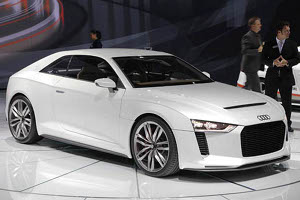 Audi Quattro Concept
Audi Quattro Concept
Finished in Col de Turini white paint, the Quattro Concept is powered by a compact turbocharged five-cylinder engine that puts out a whopping 408 hp and 354 ft-lbs of torque. The chassis beneath the car comes from an Audi RS 5, with its wheelbase shortened and roof lowered. To further trim weight, the two-passenger Quattro has an aluminum body and hood, plus hatch and bumpers made of carbon fiber. The car weighs just 2,866 lbs.
Based on the positive reactions to the Jaguar C-X75 in Paris and Los Angeles, we don't see how Audi could decide not to build the potent Quattro.
Nissan Ellure Concept
The Nissan Ellure Concept, a world debut at the LA Auto Show, is meant to bring excitement back to the sedan category while meeting consumer demands for environmentally friendly vehicles. Thankfully, the Ellure's elegant exterior and classy cabin help the car meet these high expectations. The design is expected to heavily influence the next Altima and Maxima sedan.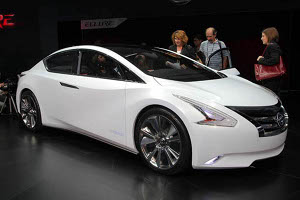 Nissan Ellure Concept
Nissan Ellure Concept
The Nissan Ellure has what the Japanese automaker refers to as "rhythmic" shapes around the body. The polished grille is aluminum and acrylic, its wing shape apparently inspired by "Kamishimo," the Samurai's formal outer coat. The headlights are LEDs, with a light ribbon adding depth to their appearance.
Inside, the front seats are covered with black recyclable suede fibers and feature slender acrylic seat backs. The front seat passenger can make use of an ottoman (no joke). Under the hood is Nissan's next-generation hybrid propulsion system: a supercharged 2.5-liter inline-four-cylinder engine mated to an electric motor with lithium-ion batteries.
Cadillac Urban Luxury Concept
Also seen for the first time in Los Angeles, Cadillac's Urban Luxury Concept addresses the move to smaller and more fuel-efficient city cars. The exterior shape of the Urban Luxury Concept carries Cadillac's strong and instantly recognizable sharp contours of its Art & Science design philosophy. The huge 19-inch wheels are pushed to the corners of the diminutive body to create a muscular stance and maximize interior volume.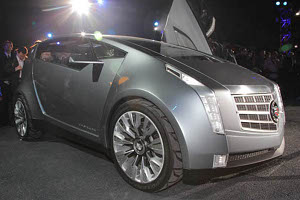 Cadillac Urban Luxury Concept
Cadillac Urban Luxury Concept
A large windshield, overhead skylights and see-through A-pillars aid visibility while adding a spacious feel of the interior. The Cadillac Concept accommodates four passengers, with access to the cabin handled by huge chiseled door slabs that open scissor-style.
The Urban Luxury Concept's powertrain is a hybrid, featuring an electrically assisted turbocharged 1-liter inline-three-cylinder paired to a dual-clutch transmission. An engine start-stop function and regenerative braking help nudge the fuel economy to a claimed 56 mpg city and 65 mpg on the highway.
It remains to be seen whether the Cadillac family tree has room for a vehicle like the ULC. Yet itís exciting to see the American brand combine traditional luxury with the push towards greater fuel-efficiency.
Mazda Shinari Concept
The LA Auto Show was the first opportunity for the public to see the handsome Mazda Shinari concept. Pictures of the car have circulated online, yet this was the fist auto show appearance for the sedan that represents the brand's new design language.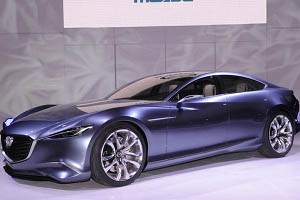 Mazda Shinari Concept
Mazda Shinari Concept
Traditional Mazda design elements will be retained, such as the five-point grille and the prominent front fender shape, but the four-door Shinari embodies a new dynamic that blends sharp character lines with sculpted body shapes to convey a sense of power and elegance.
Crisp character lines, sculpted body panels, and a pronounced cab rearward proportion give the Shinari a powerful appearance. The attention to detail is remarkable for a show car. The satin-finish metal trim that frames the bottom of the grille splays out through the headlamp openings. This strip seems to travel through the wheel arch and re-emerges as a side vent accent.
Elements of this new design might soon appear on passenger sedans like the Mazda6, as well as replacements for sporty models like the MX-5 Miata and RX-8.
Subaru Impreza Design Concept
The Subaru Impreza Design Concept is an aggressive, but familiar, outlook for the all-wheel-drive-all-the-time company. Gone are the days of the three-box Subaru, as the overall line from the front of the car, through the bottom of the A-pillar, the roof, through the C-pillar and ultimately the trunk, is smooth and continuous. The front end -- with all the character lines, headlights, fog lights and air openings -- is much sharper and more pronounced than before.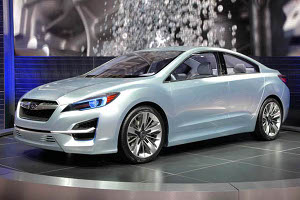 Subaru Impreza Design Concept
Subaru Impreza Design Concept
For a company that has sometimes struggled to find its own look, the Impreza Design Concept is a safe step towards a more lasting long-term impression. The engine is a 2-liter version of Subaru's trademark Boxer configuration flat-four motor. It's mated to a continuously variable transmission that Subaru calls Lineartronic.
The EyeSight system is a clever tech touch, comprised of a series of cameras located at the front of the roof. EyeSight provides for collision mitigation, and can display the feed that it sees through the in-dash video system. The cabin is filled with video panels, including one located on the lower spoke of the steering wheel.
Tuesday, November 30, 2010
Labels:
2010 LA Auto Show